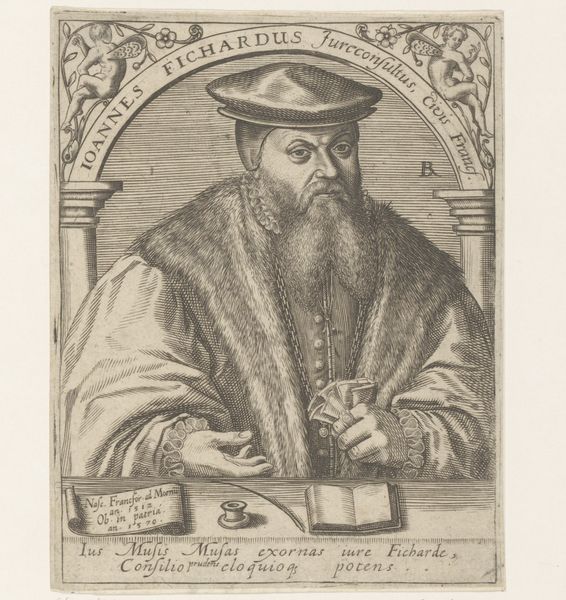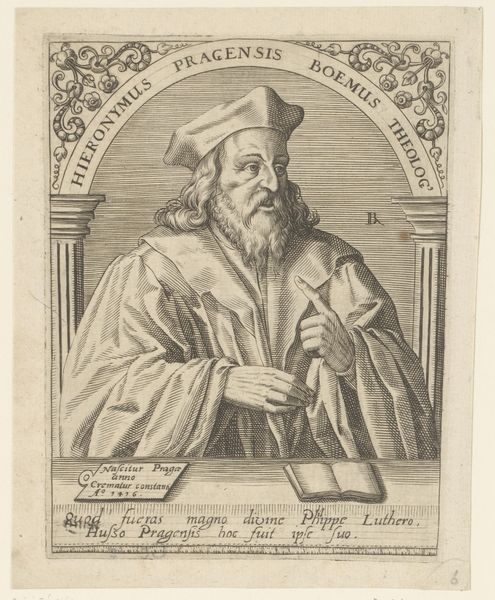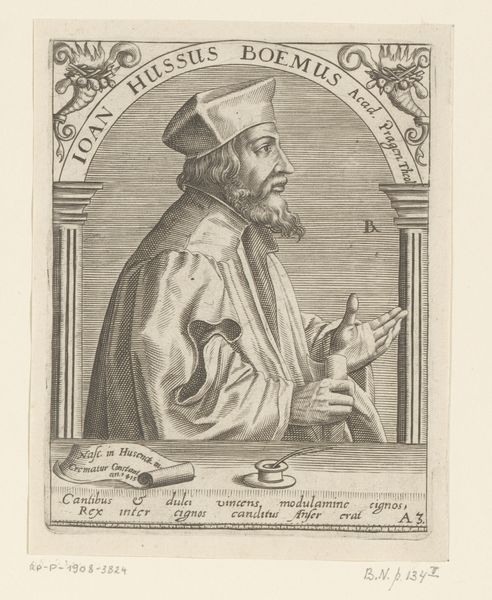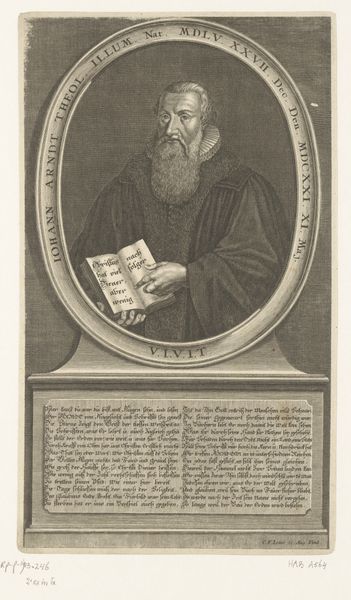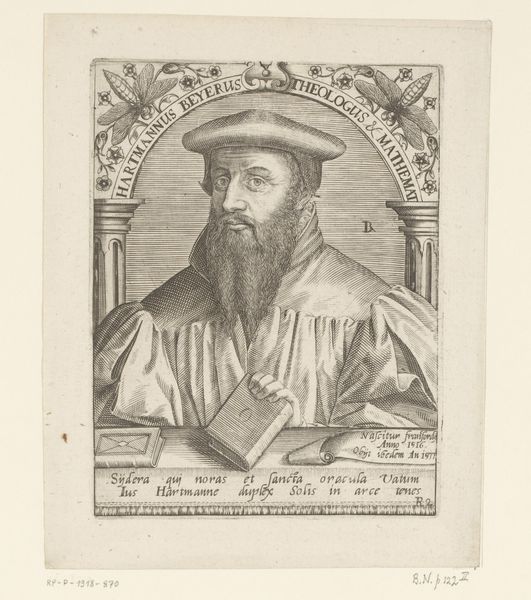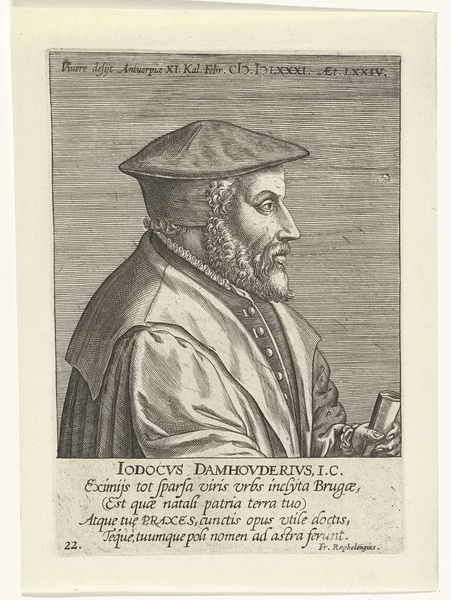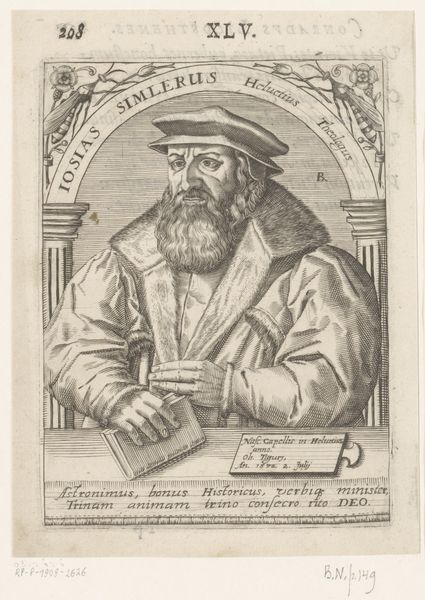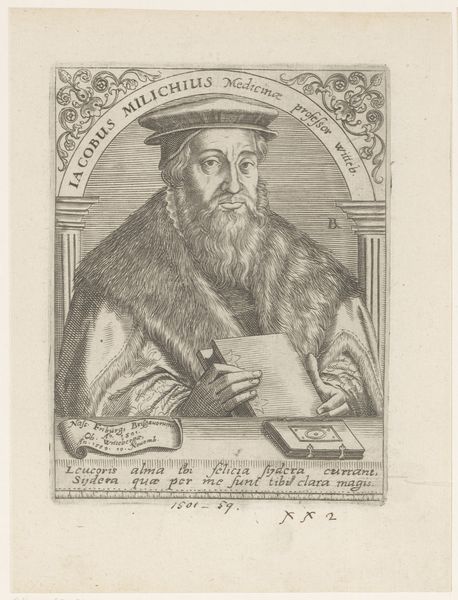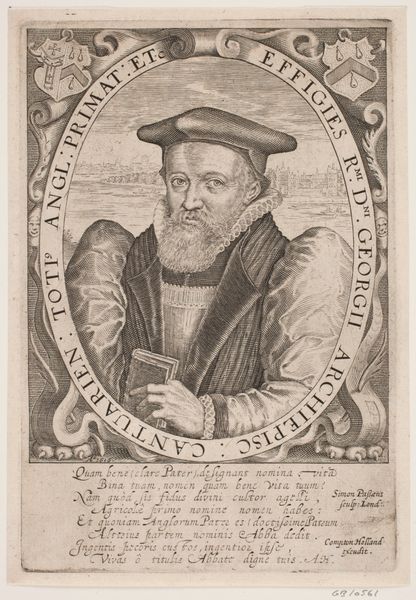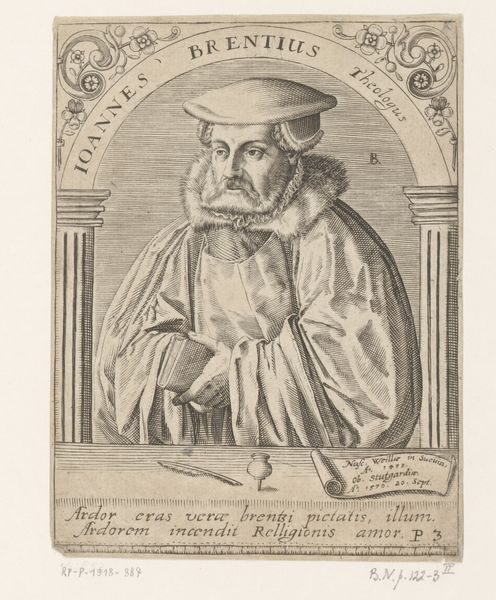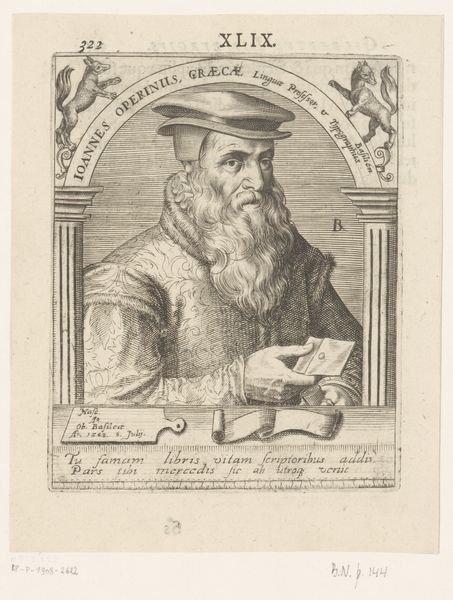
engraving
#
portrait
#
book
#
old engraving style
#
11_renaissance
#
portrait drawing
#
history-painting
#
engraving
Dimensions: height 135 mm, width 104 mm
Copyright: Rijks Museum: Open Domain
Editor: We're looking at a portrait here at the Rijksmuseum, "Portret van Peter Martyr Vermigli," an engraving by Robert Boissard, made between 1597 and 1599. It has such a serious, scholarly mood. What symbols or cultural references jump out at you in this work? Curator: Well, the open book is the most obvious. It signifies knowledge and learning. But consider Vermigli's gaze; he's looking directly at us, engaging the viewer, as if inviting us into a theological debate. The angels adorning the arched frame suggest divine inspiration, situating him within a tradition of religious thinkers. And then look at the inscription beneath: a testament, in Latin, to his enduring legacy. Does it feel like the artist aimed to sanctify him? Editor: Definitely, he seems to want to underline his legacy. So, how do all of these elements work together to communicate Vermigli's importance? Curator: Think of portraiture in the late 16th century: it’s about more than just likeness. The setting, the attributes, the very *style* of the engraving – these all contribute to a carefully constructed image. Boissard uses familiar tropes: Vermigli as theologian, scholar, man of God. And, tell me, what feeling does the uniformity in colour of the entire print inspire? Editor: I suppose the fact that it’s monochrome gives it an aged, historical feel. Curator: Precisely. The choice of medium, engraving, is no accident either; it connects this portrait to a broader visual culture of printed images disseminating ideas and shaping reputations. It’s about remembrance but equally, I feel, about asserting continued relevance. Editor: I see. It’s more than just a picture, it's a statement about Vermigli's place in history. Curator: Exactly! Every detail reinforces a message. And sometimes, as Iconographers, we must see the entire object, not simply what is immediately visible. Editor: I learned so much about how portraits can function as complex visual arguments. Thanks for your time!
Comments
No comments
Be the first to comment and join the conversation on the ultimate creative platform.
